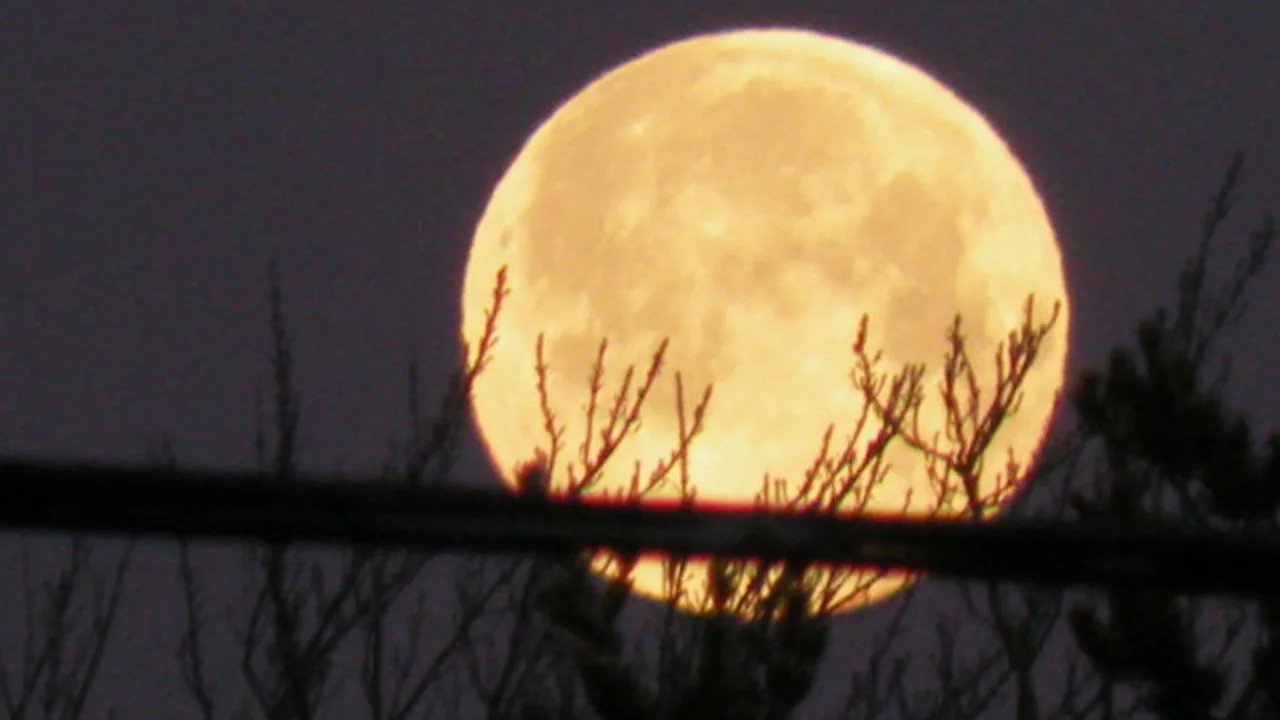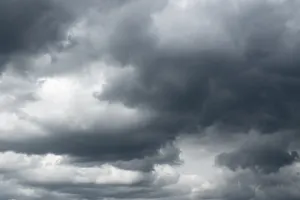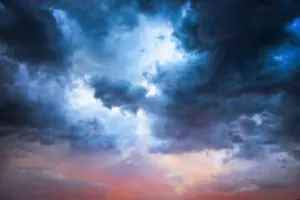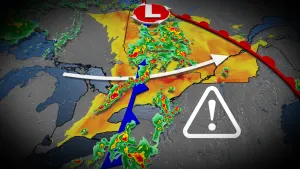
Look up! The Full Worm Moon rises tonight
Do you have clear skies?
Eyes to the sky! If you have at least reasonably clear skies Thursday night, take a few moments to go out and see the Full Worm Moon.
The Full Moon will be up all night, from sunset to sunrise, on the night of March 17-18. Check your local forecast to see if your sky conditions are right for viewing the night sky.
WHAT IS THE WORM MOON?
Throughout history, we have been obsessed with naming things. Full Moons are no exception.

This graphic collects all the relevant data about each Full Moon of 2022, including their popular names, whether they are a 'super' or 'micro' Moon, a perigee or apogee Full Moon, and whether they are remarkable in some other way (Eclipse, Blue Moon, or Harvest Moon). Credit: NASA's Scientific Visualization Studio/Scott Sutherland
As shown above, each Full Moon has a name, popularized by the various Farmers' Almanacs over the years.
According to The Old Farmer's Almanac, the March Full Moon is most commonly called the Full Worm Moon.
"For many years, we thought this name referred to the earthworms that appear as the soil warms in spring," they wrote on their website.
"However, more research revealed another explanation," they added. "In the 1760s, Captain Jonathan Carver visited the Naudowessie (Dakota) and other Native American tribes and wrote that the name Worm Moon refers to a different sort of 'worm' — beetle larvae — which begin to emerge from the thawing bark of trees and other winter hideouts at this time."
Most of the listed Full Moon names are simplifications or loose translations of names and phrases from First Nations peoples, with some Colonial American names thrown in as well. Additionally, these names were not necessarily specifically for the Full Moon. For some cultures, the name referred to the 'lunation' — the 29-day period between that Full Moon and the next one.
Some First Nations peoples named the March Full Moon or lunation after animals, such as the goose (the Haida), the eagle (the Cree), the frog (the Omaha), or the crane (the Potawatomi). For others, it was a time of hunting moose (the Abenaki) or catching fish (the Algonquin). The Assiniboine, Lakota and Sioux peoples called it the "sore eyes moon" — possibly a reference to sunlight reflecting off snow and ice, or perhaps referring to the beginning of seasonal allergies?
Watch Below: See every view of the Moon for 2022 in under 5 minutes
MOST 'AVERAGE' FULL MOON OF THE YEAR
There are supermoons and micro-moons. On the night of March 17-18, we will see just about the most 'average' Full Moon of 2022.
As the Moon orbits around Earth, its path doesn't trace out a perfect circle. Instead, it follows an elliptical path. At its closest, it comes within roughly 356,350 kilometres of Earth, and at its farthest it gets out to around 406,725 km away. The Moon's average distance is 384,400 km, which is used as a unit of measurement out in space (1 Lunar Distance).
A supermoon is a Full Moon that is closer than about 362,000 km. These appear bigger and brighter in our sky. A micro-moon is when a Full Moon is at least 401,000 km away, and they appear slightly smaller and dimmer than normal.
In January, the Full Wolf Moon was the smallest Full Moon for all of 2022. It was also the only micro-moon we'll see this year.
Each Full Moon after gets closer to Earth, leading up to the June supermoon and July perigee supermoon (the closest, largest, and brightest Full Moon of 2022).
For March, though, the Full Moon occurs at almost exactly at that average distance. It will reach a distance of 384,400 km sometime between 6 a.m. and 7 a.m. EDT on March 17, when it is about 99 per cent full. It then turns full around 21 hours later, at precisely 3:21 a.m. EDT on March 18. At that exact time, it will have moved slightly closer, to 380,878 km away, but it will still be the most average Full Moon of this year.

The March Full Moon compared to the farthest/smallest and closest/largest Full Moons of 2022. Credit: NASA's Scientific Visualization Studio/Scott Sutherland
THE MAGNIFICENT MOON ILLUSION
Seeing the Full Moon at any time of night is a spectacular sight. However, go out just after moonrise or just before moonset for what is usually an exceptional treat. It's not something the Moon itself is doing, though. It's due to a little trick of our mind known as The Moon Illusion.
There are times when the Moon actually does look bigger to us, such as during a supermoon, when the Moon is physically thousands of kilometres closer to Earth than usual. There are other times, however, when we just think it looks larger.
As our eyes take in the world around us, our brain knows from experience that objects close to us tend to appear larger and in focus. In contrast, distant objects tend to be tiny and blurry. From this, it also knows that for a distant object to appear in focus, it must be very large.

This close-up of the Harvest Moon was snapped in Calgary, AB, on September 13, 2019. Credit: Siv Heang
So, when we see a bright Full Moon hanging in the sky above the horizon — crisp and clear and in focus — while at the same time, all of the objects on the ground become smaller and blurrier the closer they are to the horizon, the combination causes our brain some confusion. To compensate for this, our brain interprets the Full Moon as being much bigger than it truly is. To be clear, the Moon is certainly much larger than any of the objects on the horizon (it's 3,474 km across), but this 'illusion' makes the Moon look huge!
Look up into the sky closer to the middle of the night, and the Moon will be high above our heads. Usually, it will be the only thing we see, other than the stars and maybe a few planets. At that time, the brain is focused only on the Moon, and without the other objects in the field of view to complicate matters, it is free to just 'see' its actual size.

This zoomed-in image of the Full Snow Moon was captured from Salisbury, NB, on February 9, 2020, and uploaded into the Weather Network's UGC gallery. Credit: Darlene MacLeod/Smith
We have a few tricks of our own that can cancel out the Moon illusion, though.
For the first one, we don't need technology. Just go outside after sunset and find the Moon near the horizon. Stretch your arm out towards it, and cover the Moon over with your thumb or even your pinky finger. Note how big the Moon looks compared to the digit in question, and keep that in mind. Maybe even take a picture of it, if you want. Later in the night, check out the Moon again when it is high in the sky. It may appear smaller than when you saw it earlier, but repeat the step to cover it over with your thumb or finger. Compare it with what you saw before, and you'll find that the Moon is actually precisely the same size at both times.
There is a way technology can help us, though. When the Moon is low on the horizon, take out your cell phone, turn your camera on, and point it at the Moon. Note: it is possible for the Moon illusion to still work on us when looking at a picture or video. This is because the brain will make the same judgments of distance, blurriness, and size as it did when looking at a 'live' scene. Still, directly comparing what we see in the sky at that time to what is shown on our small cell phone screen can help put things into better perspective. Plus, you can also take a few pictures to upload into the Weather Network UGC Gallery while you're at it!
Thumbnail image courtesy Lynn Beaupre, who shared her March Full Moon image in our UGC gallery.










